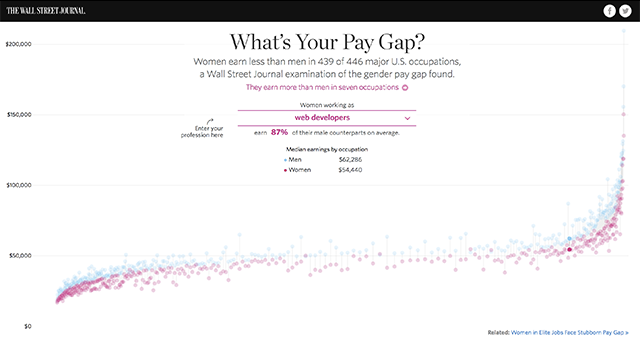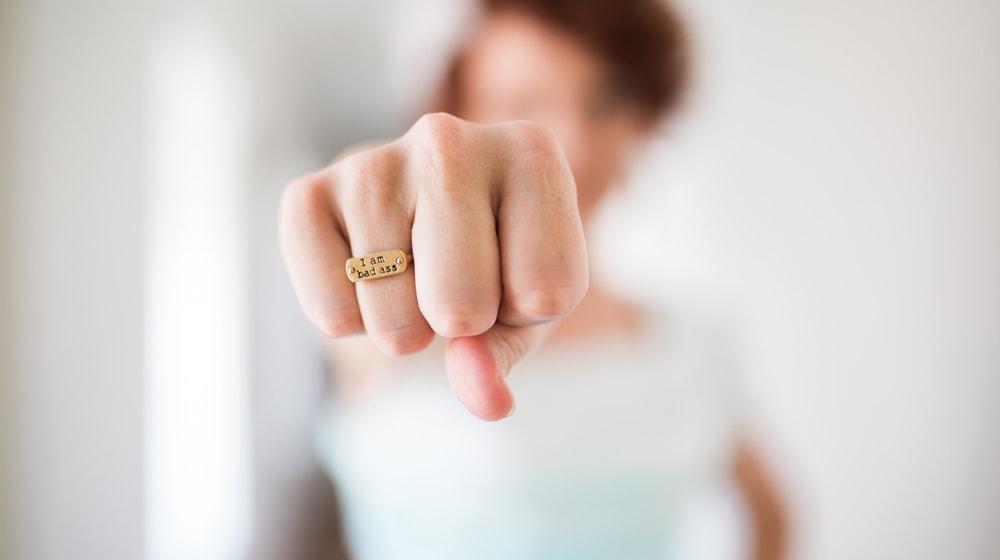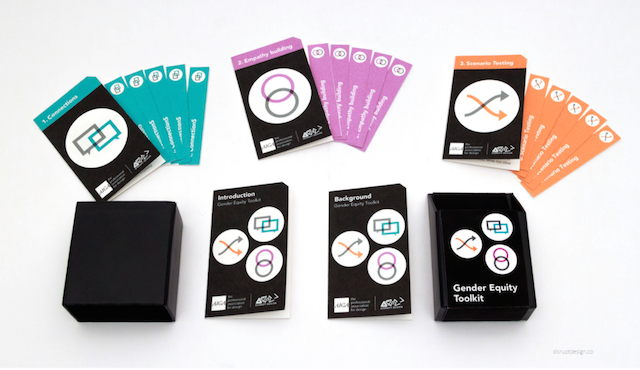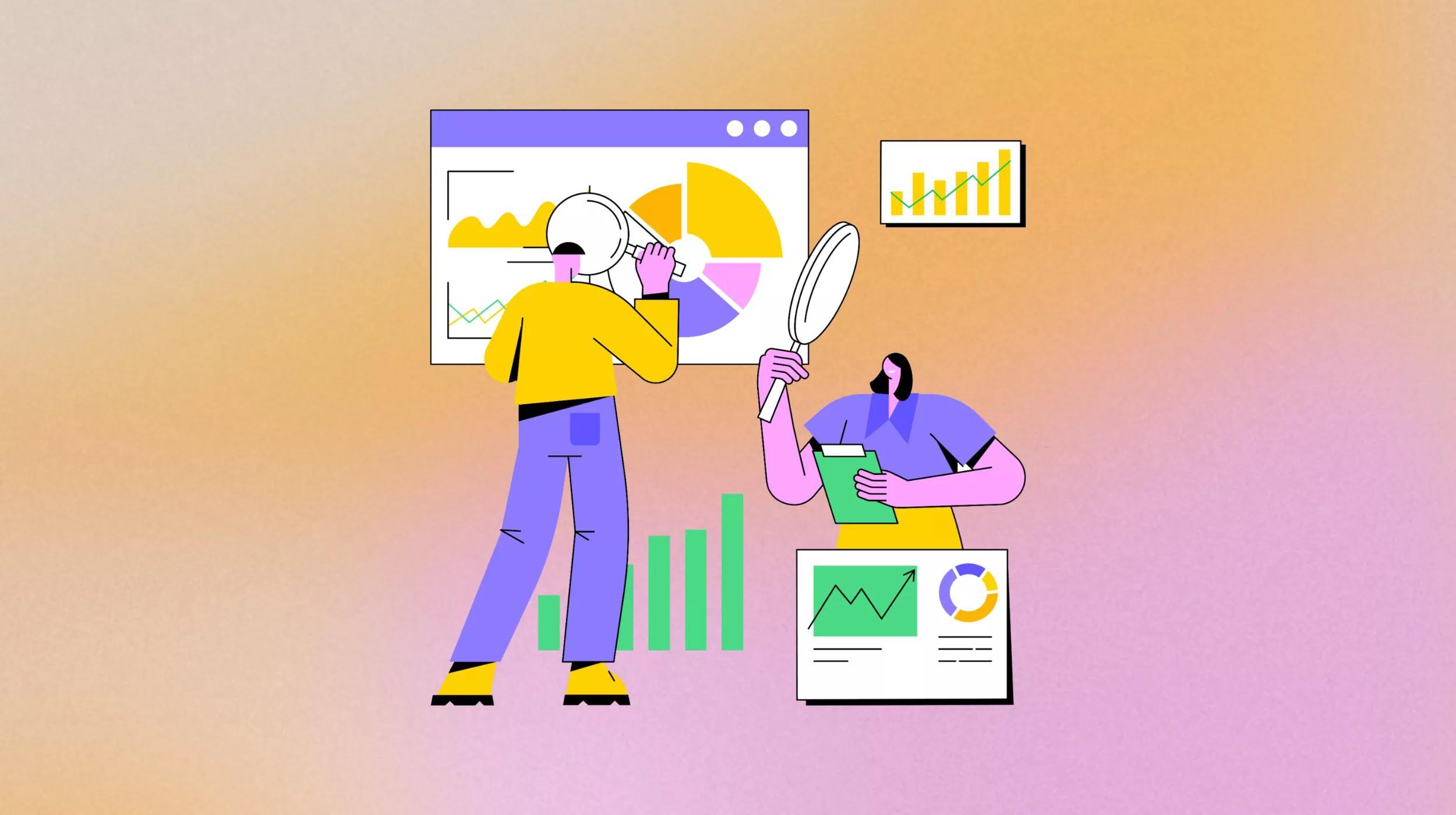Tech and design is an innovative and forward-thinking field. Yet, it still lags behind in a very important arena — gender equality.
Women who hold positions in web design, development, and UX often fall behind men in pay and leadership positions.
The Wall Street Journal shows the salary difference in “What’s Your Pay Gap?”

The tool, which displays median earnings based on data from the U.S. Census Bureau, shows that men out-earn women for both web development and general design.
Web Developer Median Earnings
Men: $62,286
Women: $54,440
Designer Median Earnings
Men: $55,835
Women: $43,845
While women are making less than their male counterparts, they are growing their presence in these fields. But, it hasn’t necessarily had a positive impact.
When women in large numbers enter an industry, wages in that field often fall. This was the case for the design field. The New York Times reported that wages fell by 34 percent as a large number of women entered the design field.
There are more women in design, but they are still lagging when it comes to salary and leadership positions. So, what can we do to foster more gender equality in the web design community?
Work from both sides of the gender equality problem
Gender equality is not a problem of men versus women. Many of the reasons that gender discrepancies exist are because both men and women fail to make changes that will level the playing field.
To develop more gender equality in web design, and other fields, both men and women need to make a conscious effort to change together.
Acknowledge unconscious bias
One driver of gender inequality is something that is often unintentional. It’s the result of an unconscious bias that is responsible for shaping the way we see the world.
These rapid thoughts are not intentional, but rather rooted in unconscious thought associations that have been shaped by our experiences and exposure to influences such as media, interpersonal relationships, and culture.
An example of the power of unconscious bias is exposed in the Heidi vs. Howard case study. Students at Columbia Business school were given a case study about former Apple executive, Heidi Roizen. Some classes were given the case study with the name “Heidi” while others were given the study with the executive’s name changed to “Howard.” Students rated “Heidi” and “Howard” to be equally competent, but they liked “Howard” more.
This is an example of how unconscious bias can take control even if we approach situations with the best intentions and belief that we are being fair.
To achieve more gender equality in web design, we all need to be aware of our susceptibility to feed into our unconscious bias.
We should strive to be more aware of what we think about people and why we think it.
Prevent snap judgments and avoid confirmation bias
Making ourselves more aware of bias can help use develop more gender equality in another way. It can prevent us from making snap judgments.
Snap judgments, also known as first impressions, are the immediate thoughts we have about a person when we meet them. They are often formed by our unconscious bias, and they are very hard to shake. Because when we make an initial judgment, we look for reasons to validate it.
“Once an impression is in place, we tend to use later information to confirm and not challenge it,” as explained in ”Gender Equality by Design’: Building a More Inclusive and Productive Workplace” by the Wharton School of Business.
To find our way to more gender equality, we need to set up systems that prevent snap judgment and limit confirmation bias. According Iris Bohnet, author of “What Works: Gender Equality by Design”:
“Formulaic approaches measuring individual performance to determine compensation work better for women.”
An example of this theory occurred in the music industry when the nation’s top orchestras started having musicians audition from behind a screen. This system increased the likelihood that a woman would advance to the next round by 50 percent.
In design, we need to do the same thing, and start looking at design samples, resumes and portfolios before using designer gender to make snap judgments and set ourselves up for confirmation bias.
Build strong advocacy networks
We all know the idiom, “old boy’s network.” It’s a phrase that describes a group of men who use their connections to advance their careers.
While women are integrating themselves more and more into professional communities and the connected workforce, they are still lagging behind when it comes to the impact that their professional networks have on their careers.
Women’s professional networks include more mentor-style relationships. Women tend coach and advise each other. On the other hand, men’s professional networks include more sponsor-style relationships. Men tend to speak out and advocate for each other.
A study on MBA graduates and the impact of mentor- versus sponsor-style relationships found that advocate-style relationships led men in the study to receive 15-percent more promotions than the women with mentor-style relationships.
To promote more gender equality in the web design community, both men and women need to speak out more and advocate on behalf of other talented, deserving and hard-working female web designers.
Practice methods of the Gender Equality Toolkit
Leyla Acaroglu, designer and sociologist, noticed the lack of gender equality in the design community and teamed up with The Professional Association for Design to create a tool to help.
Acaroglu and her team conducted a year-long research project to identify the main causes of gender bias and create the Gender Equality Toolkit.
The tool is designed to address cognitive bias using activities that promote empathy and appreciation. It also uses prompts that help women learn how to handle workplace situations, such as negotiating and taking on leadership positions.
With more awareness of the underlying issues that create gender equality and more members of the design community seeking solutions to the problem, it is far more likely for women to catch their male counterparts in salary and leadership positions and claim their equal place in design world.






